A digital nomad visa is a government issued document and resident permit that allows the holder to reside and work remotely in a foreign country for a definite period of time away from their country of citizenship or permanent residence.
In the past, before digital nomadism became mainstream, many would be nomads would usually live and work in a country illegally mainly on tourist visas—while a good chunk still do, the path to legally work remotely is becoming available in a number of countries for foreigners.
Digital nomad visas are for the most part short term and many do not provide a path to citizenship in the host country. They do however make it easy for nomads to establish legal residence in these countries to access services that would otherwise have been difficult to obtain such as driver licenses, open bank accounts and have access to educational institutions for their children.
These visas usually stipulate that the holder must not work for a company based in the host country but rather a foreign company—therefore acquiring local employment is out of the question in most cases.

Who Is Eligible for Digital Nomad Visas?
Most countries that issue digital nomad visas do not christen them this way, rather they give them unique names such as Iceland’s Remote Work Visa or Cayman Islands’ Global Citizen Concierge Program. 1 2 It should also be noted that while digital nomads may take advantage of these visas, some are not explicitly targeted for the digital nomad.
Digital nomad visas are generally eligible for different types of individuals namely:
Freelancers—Freelancers are typically individuals who are not explicitly employed, but do offer their services as contractors. Examples include writers, bloggers, independent journalists, marketing consultants, developers etc.
Remote workers—These are workers that are permanently employed with a company but who telecommute or work remotely from home for the companies that employ them.
Entrepreneurs—Entrepreneurs are those have businesses that have some online presence or can operate their enterprises using the internet. They may include bloggers, online content creators, social media influencers etc.
Workers and students—In some rare exceptions, certain students and workers can take advantage of digital nomad visas. A classic case in point is the Work From Bermuda Certificate which issues visas upon proof of enrolment in an undergraduate, graduate or research program. 3
What Countries Are Offering These Remote Worker Visas?
There is a growing number of countries that offer digital nomad visas, with 2021 and 2022 seeing an explosive number of digital nomad visas available to the public; 2023 should be no different. As a result of the growth of digital economy, and the subsequent jobs created, some form of a digital nomad visa is issued in most continents and a list is found below.
Visas In Asia
Asia is one of the most desired locations for digital nomads particularly southeast Asia known for its pristine beaches, tropical lush jungles, excellent cuisine, friendly people and relatively low cost of living for digital nomads enjoying advanced economies salaries.
With that being said, the continent does not have many countries offering some form of a digital visa. This prompts many digital nomads to use tourist visas or other non-immigrant visas to live and work in Asian countries for extended periods.
This is typically illegal and carries with it risks, because tourist visas do not generally allow their holders to hold some form of employment. As of writing, there are 3 countries in Asia that offer remote visas—these are Thailand, UAE, Malaysia, with Indonesia planning to roll out one soon. However, this number is expected to grow given the popularity of this part of the world that draws in millions of visitors yearly.
1. Thailand
Thailand has been a long time favorite for digital nomads, with world famous destinations such as Bangkok with its electric, vibrant atmosphere and Chiang Mai for its beautiful beaches and low cost of living.
The country has reliable and very fast internet with average speeds of 254.09 Mbps for fixed lines and mobile ranging in the region of 79.79 Mbps. Most digital nomads use the 60 day tourist visa which can be extended for another 30 days by visiting the local immigration office. The country recently issued a long term visa.
Thailand offers a long term resident visa (LTR) valid for 10 years that is targeted at 4 individuals with one of those categories suiting the digital nomad, these are: 4
- Work-from-home-Thailand professionals
- Highly skilled professionals
- Wealthy global citizens
- Wealthy pensioners
This visa has an application fee of US $1,320 and there is a tax exemption on income earned. Remote workers will need to bring in at least US $80,000 for 2 years before applying. If they are not able to meet this criteria, they should hold an advanced degree. It is clear however, that most digital nomads will not qualify for this program and it remains to be seen if the country will modify its program to make it more inclusive or whether nomads will continue opting for the tourist visa path.

2. Malaysia
Malaysia issues the DE Rantau nomad pass which requires digital nomads to make US $24,000 annually but the cost of obtaining the visa is relatively low, setting back the applicant at US$215 plus US$110 for a spouse or dependent. 5 It is valid for 12 months and can be extended for another year. This makes Malaysia a very attractive option for digital nomads due its affordability and is a much more inclusive program.
The country has reliable and fast internet with average speeds of 134.40 Mbps for fixed lines and mobile ranging in the region of 56.84 Mbps.

3. Abu Dhabi, United Arab Emirates (UAE)
Following in the footsteps of its more famous counterpart, Abu Dhabi, the capital of the United Arab Emirates (UAE) has launched the Remote Work Visa. 6 The Abu Dhabi digital nomad visa is similar to the one offered by its neighboring emirate being valid for one year and gives the holder access to the one of the safest cities on Earth. While Dubai is famous for its world record projects and glitzy shopping, the capital has in recent years come into its own with fascinating developments.
Abu Dhabi is the second city after Bahrain to host a Formula 1 grand prix and has on the same site (Yas Island) the Ferrari World Abu Dhabi, which is the world’s first Ferrari-themed park. It has attractions and roller-coaster rides such as the Fiorano GT Challenge, Flying Aces and Formula Rossa. While Abu Dhabi is the wealthiest of the 7 emirates and is awash with oil money, the emirate is more laid back compared to Dubai—it has made efforts to make itself a tourist destination and has succeeded in doing so. In other words, the digital nomad will enjoy living and working here.
The infrastructure is nothing short of world class, with excellent roads and communication networks. There are plenty of coworking spaces, cafes and restaurants that all offer free Wi-Fi. Internet connectively is exceptional at 219.47 Mbps for fixed lines and an impressive 179.61 Mbps for mobile speeds. The cost of the visa is US$287 and has a surprisingly has a lower monthly income threshold of US$3,500.

4. Dubai, United Arab Emirates (UAE)
The city of Dubai but not the country (UAE) has launched a digital nomad visa for remote workers and freelancers. 7 The program is valid for one year and costs US$287 with an annual proof of income of US $60,000 required. The city boasts fixed high internet speeds of 224.14 Mbps and mobile speeds of 316.10Mbps. Individuals can apply for the visa both from outside the country or within when on tourist visas.
Dubbed the ‘Las Vegas of the Middle East’, Dubai is a popular cosmopolitan destination drawing millions of visitors annually. The city offers world class shopping, high end real estate and endless attractions such as the world’s tallest building, the gold souk, the first indoor ski resort in the Middle East and the Palm Jumeirah, an artificial island home to the Atlantis hotel, along with other 5 star resorts and a master planned residential community. The city is glamorous and has never ending options for entertainment making it a hotspot for digital nomads.
However, the monetary requirements for the visa are quite high and is likely to shut out many be would be digital nomads—the cost of living in the Emirate is quite high and it is not clear if digital nomads may legally opt to stay in cheaper neighboring emirates such as Fujairah or Ras Al-Khaimah.

5. Taiwan
Taiwan is another Asian country that has rolled out a visa that can be used by digital nomads although one not specifically targeted at them, known as the Gold Card—work permit that is open ended and meant to attract foreign nationals. 8 The visa is designed to attract skilled talent like doctors, lawyers or those who are educated holding advanced degrees such as PHD’s; however, those who can prove they bring in US $5,700 monthly are eligible to apply.
The country officially known as the Republic of China (ROC) enjoys a high standard living making it a costly option for digital nomads and has fast fixed internet speeds of 189.97 Mbps and mobile speeds averaging 133.43 Mbps.

6. Indonesia
Indonesia has announced that it is planning on issuing some form of a digital nomad visa although no updates have been made by the government concerning the same. The country has also made an announcement that digital nomads can work remotely under their tourist visa, the B211A visitor visa.
Indonesia is of course home to Bali which has been consistently been ranked as the number 1 destination for digital nomads. Its unmatched beauty, serenity and low cost of living leaves no doubts as to the reason for this.

Rest of Asia
Digital nomad visas looking to other Asian destination have the option of using tourist visas or piggybacking on other short to long term visas, but these will not allow the holder to work and thus come with risks. Some of these longer term visas include:
- Thailand study visa— a visa for students in activities such as martial arts.
- Indonesia’s Sosial Budaya Visa— which is designed for visiting family and friends requiring a sponsor and valid for 6 months.
- Cambodia retirement visas—designed for individuals who are 55 years old but is still an option for digital nomads. The proof of income to qualify is US $1,000 a month.
- Philippines long-stay visitor visa—a majority of foreigners are issued with a 30 day tourist visa and can then apply for a long stay visitor visa extension which is valid for 6 months.
- Philippines’ special retiree’s visa—a special visa class designed for retirees wanting to retire in the Philippines.
It should be noted that individuals are not allowed to work with the above visas, but they do allow them to stay in the countries for an extended period.
Visas In Europe
Of all the continents, Europe has embraced the digital nomad with majority of visas catered at digital nomads coming from Europe. Most countries on the continent enjoy excellent infrastructure and digital nomads have options of the likes of living in cities in Germany or remote towns in Norway or even sleepy resort beaches in Spain.
7. Georgia
Georgia is one of the most nomad friendly countries in Europe, but it does not have a visa specifically targeted at the digital nomad. It does however allow digital nomads to work while in the country and welcomes up to citizens of 95 countries into its borders to stay visa free for up to a year. This makes this small European nation a very lucrative option for the digital nomad.
Digital nomads have to prove that they bring in USD $2,000 monthly or have USD $24,000 in savings, but if someone stays a total of 183 days, they become tax residents—the income tax is set at a whopping 20%. The country does however have an Individual Entrepreneur program that taxes a paltry 1% on business incomes topping US $155,000. This is better suited for digital nomads.
This country tops as one of the best for digital nomads because the cost of living is quite low compared to Europe and can rival some countries in Asia and Africa in terms of costs. Georgia has a low cost for the visa and there is no need for visa runs. In addition, the country has pristine beauty having part of the Caucasus Mountains within its borders that make for an excellent outdoor experience. Its capital Tbilisi is very cultured and historical giving off that European vibe in its buildings and street layouts.

8. Croatia
The Croatia digital nomad visa launched in 2021 and designed for the remote worker is more of a residence permit than an actual visa. 9 It can be applied for within the borders of the country or outside at an embassy or consulate. The residence permit is valid for a year and can be extended for an additional 6 months.
The digital nomad is required to have a monthly income of US $2,232 with an additional 10% for a spouse or dependent—it costs a paltry US $90 to apply. The country enjoys fairly high internet speeds with fixed lines having clocking at 105.72 Mbps and mobile internet speeds at 139.73 Mbps.
Croatia is one of the most visited countries on the Mediterranean with beautiful blue waters, sandy beaches, breath taking islands and a vibrant night life. It is also rich in culture and has an amazing outdoor experience making this country a digital nomad’s dream.
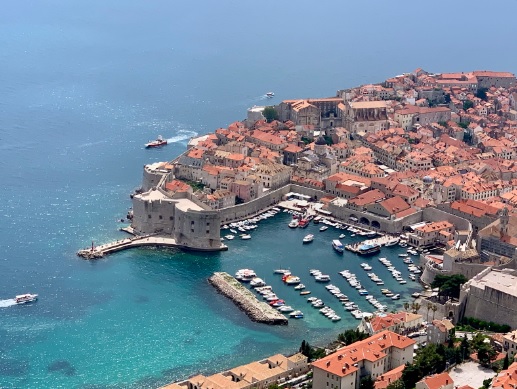
9. Czech Republic
The Czech Republic has had a freelancer visa catered for digital nomads for quite some time known as the Zivno but is quite complicated as eligibility is hinged upon having a trade license from one of these trades. 10 This visa allows the holder a 1 year residence and can be extended; however, due to the nature of the trades listed, it does limit the number of digital nomads that can take advantage of it. One silver lining is that the program is free to apply.
With a beautiful capital in Prague which has a very cultured history, the county also a fairly average standard of living with US $1,500 enough to support a family of 2 with average expenses. The Czech Republic has fixed internet speeds of 112.6 Mbps and mobile speeds of 71.73 Mbps.

10. Estonia
Estonia has been at the forefront of attracting talent to its borders with the introduction of the e-residency program catered for foreign entrepreneurs. In 2020, and with the advent and rise of digital nomadism, the country went ahead and rolled out an exclusive visa for the digital nomad known as the digital nomad and freelancer visa—the first country in the world to do so, with the visa being valid for one year allowing nomads to live and work remotely for foreign companies. 11
The cost of the Estonia digital nomad visa is US $80 for the shorter stay and US $100 for the longer stay and a minimum monthly salary of US $3,504 is required. Estonia’s fixed high speed internet speeds average at 101.53 Mbps and mobile speeds at 98.35 Mbps. The county enjoys a wide array of terrains spanning from old growth forests to rocky beaches and is dotted with castles and hilltop fortresses. Needless to say, this is the perfect digital nomad’s playground in Europe!
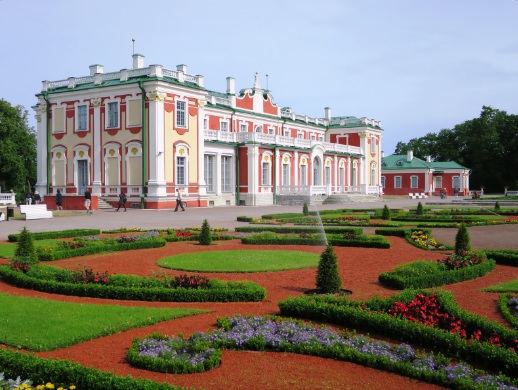
11. Iceland
Iceland is a country that enjoys a very high standard of living and is one of the most expensive countries on this list and it therefore will likely be accessible to a few digital nomads willing to brave its frigid temperatures. The country has a long term visa that can be used for digital nomads and is valid for 6 months within Iceland and 3 months if applied for the Schengen area. 12
Monthly income requirements are on the high side at US $7,777 and the country has fixed internet speeds averaging at a high 180 Mbps. This country is very beautiful offering stunning landscapes and provides all year round entertainment for the adventurous digital nomad.

12. Germany
The largest economy in Europe has a visa catered to the freelancer and named in the native dialect known as Aufenthaltserlaubnis für selbständige Tätigkeit. 13 It costs US $106 and allows the holder residence for up to 3 years but also has a 6 months option which can then be renewed. Acquiring it may not be so straightforward due to the bureaucracy surrounding the application process.
Germany has a very high standard of living and therefore digital nomads must be prepared for this and the authorities require someone to prove that they will be able to sustain themselves and have accommodation. However, the digital nomad is in for a treat as the country offers breathtaking landscaping, offering the visitor forests, mountain ranges and rivers as well as many historical attractions and monuments. Fixed internet speeds are impressive clocking in at 152.97 Mbps and mobile speeds at 109.08 Mbps.

13. Norway
This Scandinavian country is rich in oil reserves and has the largest sovereign fund in the world—it also one of the most beautiful places on Earth especially in the summer. Famous for its fjords and rugged wilderness, Norway has in place a digital nomad visa for remote workers that is valid for 2 years and is known as the Independent Contractor Visa but it is not explicitly referred to as a digital nomad visa. 14 It costs US $610 and can have a total validity of 3 years.
Like Germany, Norway is a very expensive place to live and the government require nomads to bring in at least US $39,000 annually and prove they have accommodation arrangements. The country has an advanced infrastructure and enjoys high internet speeds with fixed lines averaging 186.05 Mbps and mobile speeds clocking at 201.8 Mbps.

14. Portugal
Even before the advent of nomadism, Portugal has been a magnet for many Americans looking for a destination to retire in Europe or simply looking for a change from North America—this country that straddles the Iberian Peninsula along with Spain enjoys:
- Warm temperatures
- Excellent surfing opportunities
- Beautiful beaches
- Historic landmarks
- Thermal springs and
- A rich cultural history
Its D7 visa which is suited for digital nomads is a game changer, not only because it is valid for 1 year, but can be renewed for 5 years after which the holder has the option to become a permanent resident. Transitioning into citizenship becomes easy once permanent residency is achieved.
No other digital nomad visa on this list except Albania offers this flexibility which makes Portugal attractive for those looking to permanently migrate or looking to get a passport that will give them access to the rest of the EU.
The visa costs US $90 and additional US $80 for the resident permit fee—the qualifying income is US $900 which is within easy reach of many digital nomads and the country has a fairly low standard of living compared to the rest of the Europe. Average fixed internet speeds clock in at a high 200.01 Mbps and mobile speeds are 143.05 Mbps.
In addition to the D7, the country has launched the Portugal digital nomad visa known as the D8 visa especially for the remote worker that has less bureaucracy to acquire while also providing a path to permanent residence or citizenship in the country. It is valid for 1 year with an option to extend up to 5 years and requires the holder to make US $2,750 annually.

15. Spain
Portugal’s neighbor, Spain has long been a favorite with Westerners looking for an alternate destination that offers 1st world conveniences with European culture and most importantly is the most sunniest country in Europe enjoying over 300 days of sunshine yearly.
Spain doesn’t have a digital nomad visa yet but is working on rolling out one. They do however have a Non-lucrative visa catered for the retired and wealthy which prohibits work, but digital nomads can certainly get away with remote work! 15 This visa costs US $140 and requires an income of US $2,300 to qualify.
Spain’s new digital nomad visa once rolled out will be valid for one year and can be extended for 2 years, and there would be a tax rate of 15% for the first US $635,000 made.
The Spanish climate (on the Costa Blanca) has been described as the world’s healthiest by the World Health Organization (WHO) and the country enjoys fairly low standards of living, beaches, mountains—vibrant cities like Madrid and Barcelona are a hotspot for digital nomads. The country has a very high average internet fixed speed of 239.23 Mbps but lower mobile speeds, although still impressive of 78.78 Mbps.

16. Malta
Malta has a digital nomad program targeted at non-EU nationals known as the Nomad Residency Permit valid for one year and is renewable—it costs US $330 to acquire. Monthly income requirement for the visa is set at US $3,000. This tiny archipelago straddling the azure Mediterranean ocean is a breath taking island nation that enjoys 300 days of sunshine, has a rich history, culture and miles of white beaches.
The country has an excellent communications infrastructure with a nationwide 5G network installed but does have a high standard of living especially when it comes to housing which can easily set back someone US $1,600 per month on average. However, the cost of living does remain lower than in central and North European states. Average fixed internet speeds clock at 180.17 Mbps and mobile speeds fall around the 93.02 Mbps area.

17. Greece
Greece is easily one of the most popular countries in Europe known for its rich history dating back centuries and its location on the Mediterranean affords it inviting beaches—the country has many attractions and is littered with ancient landmarks such as the 5th-century B.C. Acropolis citadel with the Parthenon temple.
Put it simply, it is one of the most visited countries in Europe and its economy draws 25% of its GDP from tourism—the country has spared no expense to support its infrastructure to cater for tourism. Greece has fixed internet speeds averaging 54.55 Mbps and mobile speeds clocking at 127.26 Mbps.
The country enjoys a low cost of living and has two programs in place for the digital nomad. This first program provides an income tax reduction of 50% for 7 years to specific nationalities who are committed to living in the country for 2 years.
The second program which peeks the interest is the Greece digital nomad visa for non-EU/EEA citizens that allows the holder to work remotely for a foreign employer or be a self-employed entrepreneur. It is valid for a year but can be extended twice making it 3 years in total and requires the holder to bring home US $3,700 monthly and 20% more for a partner or spouse and an additional 15% for a child.

18. Romania
Romania launched a digital nomad visa in 2021 that is valid for one year with the option of being extended for another year. Romania has the fastest fixed internet speeds in Europe with average speeds clocking at 260.24 Mbps. However, while mobile speeds are not that fast, they are still well above average with speeds of 74.40 Mbps. The country requires nomads to bring in US $3,500 per month which makes it a tougher sell compared to other Eastern European nations.
Famous for its forested areas covering the region of Transylvania flagged by the Carpathian Mountains, Romania has many historical attractions such as medieval towns, castles and fortified churches making it a tourist magnet and hub for digital nomads that can afford the lifestyle.

19. Hungary
Hungary has launched a special digital nomad visa known as the white card with a relatively low income threshold at just US $ 2,200. 16 This visa is however not for digital nomads who are looking to move with family and only an individual residency permit is issued. It is aimed primary at singles who are below the age of 40 and is valid for 1 year with an option to extend it for another year.
Budapest, the capital of Hungary is bisected by the River Danube and its main driver of its economy is tourism—the city is always eager to welcome visitors. It is a safe city with low crime levels and has attractions such as the fisherman’s bastion, St.Stephens Basilica and Széchenyi Thermal Bath—you cannot get bored in this city. Hungary also enjoys one the fastest speeds on the continent with fixed average speeds ranging in 247.75 Mbps area and mobile speeds at a lower but respectable 86.94 Mbps.

20. Cyprus
This island country is located on the southern part of the Anatolian Peninsula straddling the eastern Mediterranean Sea being geographically located in Western Asia, but being mostly Southern European. It is a popular destination in the Mediterranean with a splendid mix of breath taking beaches, nature and historical sites. The average cost of living is 23% lower than in the U.S. and digital nomads can expect to rent up to 42% lower than they would in the United States. Average fixed internet speeds are approximately 76.77 Mbps and mobile speeds are relatively high in the range of 175.55 Mbps.
Cyprus has a program for digital nomads but the country has vastly limited the number of permits it issues to just 500 making this program exclusive; each permit gives its holder the right to reside and work remotely in Cyrus for 12 months and can be extended for another 2 years. 17 The digital nomad visa gives UK citizens and other non-EU citizens a chance at residency provided they make a net of US $3,600 monthly and it costs US $75 for the visa and an additional for the alien registry.

21. Latvia
Latvia has launched a digital nomad visa but is limited in its scope, only foreign nationals that are working for an employer or business that is registered in an Organization for Economic Cooperation and Development (OECD) country are eligible—there are only 38 countries that are part of this ratification. The good news is that most of these countries are advanced economies, ranging from the United States to the United Kingdom—most digital nomad jobs are located and based in these countries.
The program is relatively cheap to acquire costing US $65 and US $130 for an expedited application—the applicant must be able to prove that they make 2.5 times the average wage in Latvia which is currently stands at US $1,050 meaning a digital nomad would have to bring in approximately US $2,700. The visa is valid for 12 months and can be extended for an additional year.
Located on the Baltic Sea, Latvia is sandwiched between Lithuania and Estonia and has a varied landscape from vast beaches to sprawling forests and enjoys a rich cultural heritage. Its capital Riga has plenty to do with an extensive market, an old town from the medieval times and an open air museum, the Latvian ethnographic. Rents are almost 80% lower than they are in the U.S. which makes the country a viable option for nomads. Fixed internet speeds clock at 164.60 Mbps and mobile speeds have an average of 76.89 Mbps.
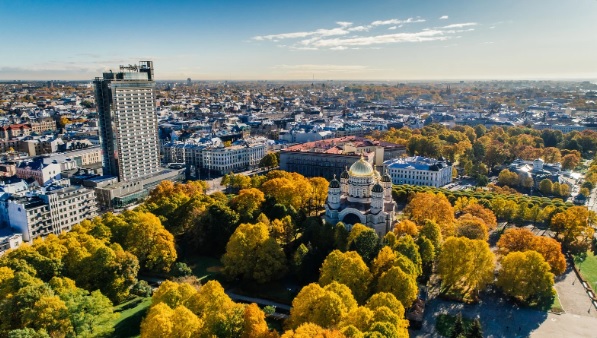
22. Albania
Albania is a small country that is rich in history and has the archaeological sites to show for it; it is dotted and littered with castles within its borders. Located on the South Eastern Europe’s Balkan Peninsula, this country has coastlines on both the Ionian and Adriatic Seas and has varying landscapes ranging from the beaches on its sunny coasts to the frigid snowcapped mountains of the Albanian Alps, it is truly a country of contrasting and breathtaking beauty.
The digital nomad would be pleased to know that this Eastern European nation offers a digital nomad visa specifically catered for the remote worker that is valid for one year and can be extended for 5 more years. 18 Just like Portugal, after 5 years of residency, the nomad can apply for permanent residency that may lead to citizenship.
Costs of the program and income requirements are not yet stipulated and will be updated on this page and the blog that will have more details about Albania and the application process for the digital nomad visa. It should be noted that the country has quite slow internet speeds with average fixed internet speeds clocking at 66.60 Mbps and mobile speeds averaging at 54.08 Mbps.

Visas In The Caribbean
The Caribbean region located in the Americas and surrounded by the Caribbean Sea dotted with island nations has long been a haven for tourists hailing from North America and Europe. From the Bahamas to Jamaica, all these islands have unique features that have made them the darlings of the world. Sunny blue skies and white beaches, coconut trees and clear azure waters greet visitors making this area one of the most visited and popular in the world.
A true haven for the digital nomad looking to enjoy their workation, a number of Caribbean countries have jumped onto the digital nomad bandwagon, intent on attracting foreign talent to their shores to bolster their economies without the burden of hurting the local job market. These include Barbados, Bermuda and the Cayman Islands.
23. Antigua & Barbuda
The twin island nation of Antigua and Barbuda are not left behind in the race to attract digital nomads and they have launched the Antigua Nomad Digital Residence that is valid for 2 years. 19 Antigua and Barbuda and the other small islands have a total of 365 beaches covering a colossal 95 miles of coastline, and in addition, Barbuda has protective reefs with an extensive lagoon and a bird sanctuary. Friendly and welcoming people make this country a magnet for nomads.
This program is fairly expensive to apply with a fee of US $1,500, US $2,000 for a couple and US $3,000 for a family consisting of 3 or more members. Digital nomads would have to prove that they make US $50,000 annually. The downside of this country is that it is one of the most expensive countries in Caribbean to live in, but the cost of living is still 20% lower than it is in the U.S and Western Europe. Antigua and Barbuda internet speeds are currently dismal with fixed average speeds of 33.69 Mbps and 33.8 Mbps for mobile speeds.
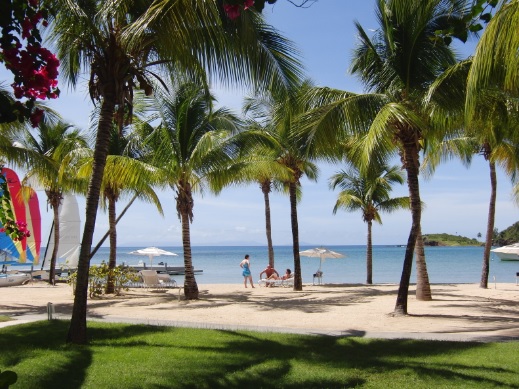
24. Barbados
Barbados was one of the early adaptors of the digital nomad visa welcoming digital nomads to its shores—they quickly rolled out the aptly named the Barbados Welcome Stamp. 20 Barbados gives the nomad a chance to enjoy life on a Caribbean island with rents lower than 50% on average than the United States but the country does have a relatively higher standard of living than in the U.S at over 20%. It is cheaper than many other Caribbean options such as the Cayman Islands.
It is well connected to the rest of the Caribbean nations and South America and enjoys one of the highest internet speeds in the Caribbean with fixed internet speeds clocking in at 124.92 Mbps and mobile speeds currently not rated.
On the downside, the cost of the Barbados digital nomad visa which is valid for a year is very high with the application setting back the applicant US $2,000 and US $3,000 for a spouse and/or children; this fee is however only paid once an application is approved. Barbados also needs the applicant to make US $50,000 a year which excludes a large segment of the digital nomad community.

25. Bermuda
Bermuda has a digital nomad visa named the Work from Bermuda visa (certificate) issued by the government and targeted at nomads for the purpose of attracting skilled workers to this Caribbean country. 21 The Bermuda digital nomad visa has a fairly low cost to apply at US $263 and is valid for one year and the government surprisingly does not require the remote worker to prove their income—it also easy to apply and straight forward with processing time taking just 5 days!
Bermuda is however the most expensive country on Earth to reside, with an extremely high standard of living. It does have fairly slower speeds compared to countries in Europe and North America, with average fixed line speeds clocking at 73.6 Mbps.
If they can afford it, the digital nomad will have access to one of the most beautiful islands in the world. This British territory is famous for its pink sand beaches and clear turquoise waters with famous beaches such as Elbow Beach and Horseshoe Bay. When the nomad is not drenching themselves in the ocean, they have access to attractions such as the interactive Dolphin Quest with maritime history at the National Museum of Bermuda and the colossal Royal Naval Dockyard complex.

26. The Cayman Islands
The Cayman Island is the 3rd most expensive country to live in the world and the name of its digital nomad visa is appropriately called the Global Citizen Concierge Program exclusive for wealthy remote workers. 22 Cost for the visa is high as can already be deduced, and comes in US $1,469 and valid for 2 years. The Cayman Islands has one of the fastest fixed internet speeds of the Caribbean, with speeds of 100 Mbps costing US $90 and 500 Mbps at US $225 a month.
Like the Bermuda, the Cayman Islands is a British overseas territory that is comprised of 3 islands with the biggest one famous for its abundance of beach resorts and snorkeling. The smaller island has varied wildlife including iguanas and seabirds—in short, these beautiful islands offer a relaxing and exciting ambience that make them the perfect digital nomad destination barring the high cost of living. It is clear that the Islands are keen to attract digital nomads of the executive remote worker caliber and/or IT professionals such as software engineers.
The visa is valid for 2 years and the digital nomad has to prove that they make US $100,000 for a single nomad, US $150,000 for a couple and US $180,000 for a family.
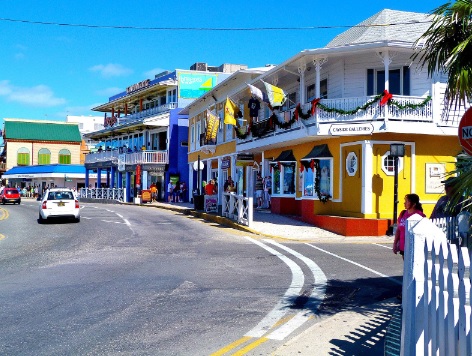
27. Anguilla
Anguilla is a British overseas territory comprising a small island a number of offshore islets and is quite the remote location, which may not ideal for many digital nomads since connectivity is limited. The country has however joined the ranks of several Caribbean countries that offer visas for digital nomad visas with a visa that is valid for a year. Application to get into the Anguilla digital nomad visa is on the costly side with fee for the visa setting back the nomad US $ 2,000.
Its remoteness may be a magnet for some nomads in sync with that vibe. There are activities for the family, historical and cultural seeker or those seeking an adventure. Anguilla is 16 miles long and 3.5 miles and consists of a population of just 15,000 who are friendly. It is truly an incomparable coral island of breathtaking beauty but like many of the Caribbean countries has a high standard of living. Due to its isolated status, digital nomads can expect fixed internet speeds to clock at a paltry 5-10 Mbps.
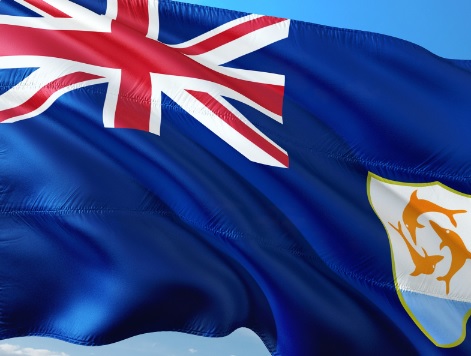
28. Montserrat
This island is slightly larger than Anguilla, but has a population that is significantly smaller at 5,900 and is just as remote as Anguilla with very slow internet speeds ranging in the 5-10 Mbps spectrum although the government is in the process of installing a fiber optic network. As soon as the connectivity is brought up to speed and combined with its desolation, this could end up being a hidden gem for digital nomads.
The Montserrat digital nomad visa also known as the Remote Work Stamp is valid for one year with the cost of the program being US $500 for a single person, US $ 750 for a family up to 3 dependents and US $ 250 for additional family members. 23 Digital nomads must prove that they make US $70,000 per year which means that few nomads would get to work remotely at this beautiful island that consists of white sandy beaches, lush forests and unique history.

29. Dominica
The delightful news is that Dominica is one of the cheapest options of all the Caribbean islands that allow digital nomads the opportunity to live and work remotely on the island. Its specialized digital nomad visa is christened Work in Nature (WIN) and allows the holder to reside in the commonwealth for up to 18 months; however, nomads will have to prove that they bring in US $70,000 annually which limits the amount of nomads who can take advantage of this opportunity. 24
The visa has a US $ 100 application which is not refundable and costs US $800 for a single person and US $1,200 for a family. Famous for being a lush tropical island, Dominica is a mountainous island nation with tropical rain forests and natural hot springs—there is plenty to do, from snorkeling, to scuba diving and hiking—this would be one of the best places on Earth to take your work with you.
Additionally, Dominica offers its digital nomads an income tax break and gives digital nomads an option to place their children either in private schools or state owned institutions. The island nation has fairly higher fixed internet speeds ranging in the 109.05 Mbps.

30. The Bahamas
This island nation has long been a tourist haven for Americans looking for an alternative to Mexico’s beach resort cities such as Cancun, and is a favorite cruise ship destination. Bahamas is tax free and is composed of 16 beautiful islands with breathtaking beaches and together, they have launched the Bahamas Extended Access Travel Stay (BEATS) program that is catered for digital nomads.
The visa is valid for 1 year and can be extended 36 months—the visa is on the costly side at US $1,000 and US $500 for every dependent but has a low US $25 application fee. The government requires the digital nomad to present a letter from their employer or prove that they are self-employed and have a viable income. Internet speeds are better than average for this part of the world with fixed internet speeds clocking at 73.24 Mbps.
However, it should be noted that the Bahamas is the 4th most expensive place to live on Earth. Clearly, the visa is meant for only a fraction of the digital nomad population.

31. Curaçao
This Dutch Caribbean territory is famously recognized for having beaches tucked into coves and has a rich marine life nestled among its coral reefs; it is also out of harm’s way in regards to the hurricanes that plague the Caribbean. As well as having breathtaking beaches, Curaçao’s capital is a colonial Dutch town known as Willemstad with a town center that has pastel-colored architecture that is very cheek and pleasing to the eye.
The territory has a digital nomad visa known as the @ HOME in Curaçao that allows its holders 6 months residence on the island with an option to extend it for another 6 months. 25 The visa costs US $294 and proof of income that is undisclosed at this time is required. The standard of living is quite high on this island, as it is the 35th most expensive place to live in the world. Internet speeds are also quite slow with average fixed line speeds clocking at 25 Mbps.

32. St. Lucia
St. Lucia is among the islands in the Caribbean that has come slightly late to the digital nomad scene, but nonetheless the country has come up with a lucrative digital nomad visa known as the Saint Lucia Live It. This is an excellent opportunity and the nomad visa is actually a non-immigrant visa that has been adjusted to allow the visitor to live on the island for 12 months and work remotely. The St. Lucia digital nomad visa can be multiple entry and has a relatively low cost of US $75 which does not require the holder to prove a minimum specified income.
This island nation is located on the Eastern Caribbean has tapered mountains on the west coast. The coast is littered with sites for reef diving, volcanic beaches, fishing villages and luxury sites. The outdoor loving digital nomad will not be disappointed here as there are trails that lead into the interior forests with beautiful waterfalls such as the 15 mile Toraille that pours into a garden over a cliff. Internet speeds are average on the island with fixed line speeds clocking at 74.8 Mbps. It should be noted that St. Lucia has the same standard of living as Italy, coming in at 35th in the world.
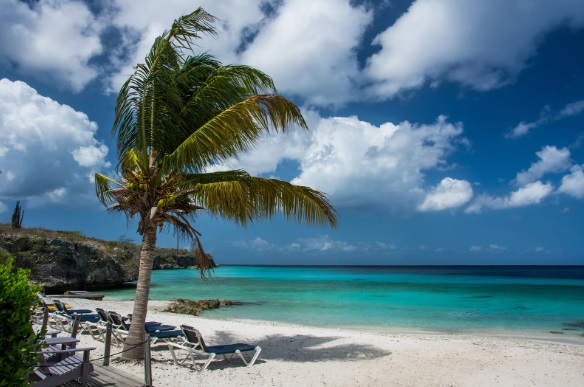
33. Grenada
The Caribbean island of Grenada recently launched its digital nomad visa that is valid for one year and can be extended for an additional 12 months. The spice island allows digital nomads to enjoy zero income tax which is a plus for those who will not have any tax obligations in their home country as a result of change in residence. Grenada’s digital nomad visa does not come cheap as it costs US $1,500 for the holder, US $2,000 for a family that has 3 dependents and US $200 for additional dependents.
Thankfully, this Caribbean island doesn’t shut out much of the digital nomad community, with income requirements of only US $37,000 annually required. The country has fairly average speeds for this part of the world with average fixed speeds coming in at 64 Mbps.
Comprising a main island and smaller outlying islands, Grenada is home to serene beaches, majestic waterfalls and even has an underwater park full of sculptures. Its capital St. George has colorful homes from its colonial past and is a perfect destination for the solo and/or family oriented nomad.
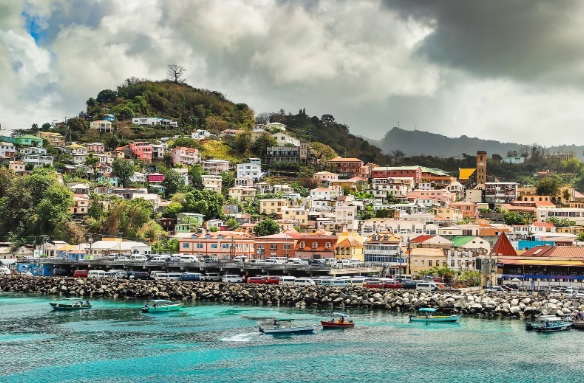
Visas In North and Central America
There are only 3 countries in North and Central America that offer a visa that is catered to the digital nomad which is logical since the U.S and Canada cover most of the land mass of these two continents with they being the sources of the digital nomads themselves. The three countries that offer visas suited for nomads are Mexico, Costa Rica and Panama.
34. Costa Rica
Costa Rica has always been a favorite for Americans looking to escape a high standard of living and a place where their American dollars could go a long way. The country is famous for a laid back style, majestic beaches, and lush jungles, waterfalls and volcanoes. It is truly a paradise where even a low income digital nomad can flourish. Internet speeds are however slow, with fixed speeds coming in at 64.7 Mbps and mobile speeds averaging 17.9 Mbps.
Costa Rica does not offer a visa that is specifically catered to the digital nomad—they are however working on one—they do however have a non-immigrant visa known as the Rentista that allows foreigners to stay for up to 2 years. This visa does not allow individuals to work but can be used by employed individuals and entrepreneurs. The visa costs US $250 and requires the holder to prove an income of US $2,500 monthly or make a deposit of US $60,000 in a Costa Rican bank.

35. Mexico
Mexico does not have a visa that is catered exclusively to the digital nomad but is currently working on one. The country has been a popular for Americans with its warm weather, white beaches, diverse landscapes and past Mayan and colonial culture. It also has an excellent cuisine scene with food that is very tasty and cheap. With a low cost of living, Mexico is the perfect getaway for the digital nomad and is a stone’s throw away from the U.S.
The country has two visas that are available: the 6 month tourist visa and a temporary resident visa that allows the holder to reside in Mexico for one year and can be extended for another 3 years. To obtain the visa, individuals will need to be interviewed at the embassy and the cost of the visas range from US $190-390 with the digital nomad burdened with proving that they make US $1,620 a month—they could also show that they have US $7,000 in the bank to obtain the visa.
Mexico has inferior internet speeds compared to its Northern neighbor, with fixed internet speeds clocking at 49.61 Mbps and mobile speeds averaging 25.92 Mbps.

36. Panama
Famous for the Panama Canal, this Central America country has risen to be the most developed nation in the Central Americas fueled by income it has generated from dividends garnered from the canal as well as a vibrant services sector together generating almost 80% of the country’s GDP. The country enjoys fairly high speed internet with fixed speeds averaging 115.38 Mbps and mobile speeds slower at 15.94 Mbps.
Known for its beautiful nature, warm weather, beaches and lively cities, Panama enjoys a high standard of living but the cost of living remains fairly lower than in many industrialized nations making it a perfect getaway destination for digital nomads. Panama has a digital nomad visa called The Short Stay Visa for Remote Workers that is valid for 9 months with the possible extension of another 9 months. The visa costs US $ 300 and requires the digital nomad to make US $36,000 annually.

Visas In South America
Currently, there are only two countries in South America that offer visas that are specific for digital nomads—these are Brazil and Ecuador. This list should grow given the proximity of the content to North America, the low cost of living and beauty in this part of the world.
37. Brazil
Brazil was the first country in the continent to offer a digital nomad visa and is valid for one year for the holder with the option to renew for an additional year. 26 The country required the nomad to only prove a monthly income of US $1,500 which makes it easily accessible for most nomads—processing for the visa is to be done at the local embassy of the country of residence of the remote worker. Brazil has fairly high internet speeds with fixed lines clocking at 100.95 Mbps and mobile speeds average at 36.07 Mbps.
Known for its lush forests, including the biggest rain forest, the Amazon, Brazil is a country of diverse landscapes and culture and consisting of some of the most beautiful beaches in the world. It has unique cuisine, majestic waterfalls and world famous major cities like Rio de Janeiro, São Paulo and Brasilia full of cultural vibrancy—the digital nomad is spoilt for choice whenever the need to take time off work pops up.

38. Ecuador
Sharing the Amazon rain forest with Brazil, Ecuador is a country of natural beauty comprising white beaches, the Andes Mountains and is littered with colonial era cultural cities within its territory. It has a very low cost of living and is not picky about who it lets in into its borders. Ecuador’s digital nomad visa like many around the world is valid for 1 year and can be extended for an additional 12 months.
The country has lower than average internet speeds with fixed lines clocking in at 46.8 Mbps and mobile speeds averaging 19.88 Mbps. Digital nomads only need to prove that they make US $1,275 a month to be eligible for the visa which makes accessible to most if not all nomads.
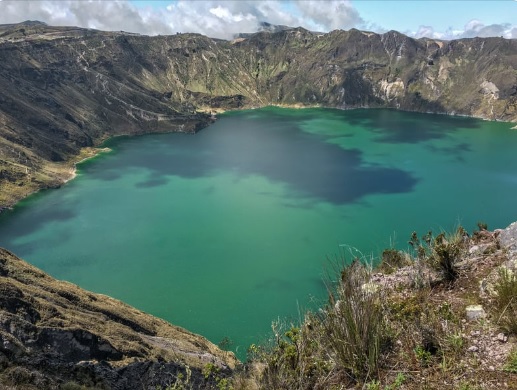
39. Uruguay
This small country located in the South Eastern region of South America has entered in the digital nomad visa club with the introduction of a remote worker’s visa that grants the holder a right to live and work remotely in the county for 180 days and can be extended for up to a year. 27 The fee of the visa is exceptionally low at only US$11, but the catch is that it cannot be paid using a foreign bank account which implies that applicants must travel to Uruguay to process the visa.
Another plus is that this visa does not have a minimum income requirement making it much more of a viable option compared to some countries on this list. Nevertheless, applicants must have a clean criminal record and must either be self-employed or remotely work for a foreign company. The county however does not have impressive download internet speeds with fixed lines clocking at 94.6 Mbps and mobile speeds at 32.87 Mbps.
Known for its miles of unspoiled sandy beaches, an electrifying football culture, steaks that are to die for and thermal baths, Uruguay is a country of natural beauty with lots to do. The country has a relatively high standard of living compared to its neighbors and is a socially advanced nation with high global scores for tolerance, personal rights and inclusion.
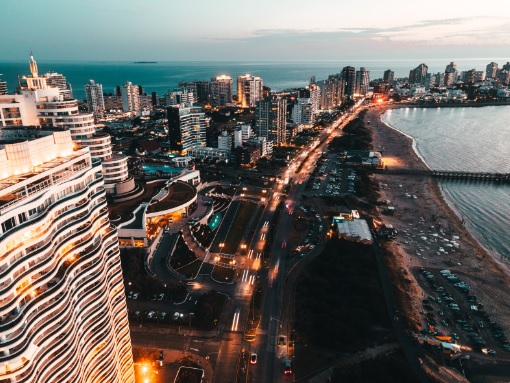
Visas In Africa
Africa has surprisingly not been left behind in the digital nomad revolution with a number of African countries putting together digital nomad visa packages to attract this new to type of worker. As it stands, there are 4 countries on the continent that offer visas for remote workers with that number likely set to grow, since it is the content with an overall lower standard of living compared to the rest of the world. Countries that offer the visa include Mauritius, Seychelles and Namibia.
40. Mauritius
Mauritius is an island nation that is located off the coast of East Africa known for its pristine beaches, reefs and lagoons. Its interior is mountainous with rainforests, waterfalls, hiking trails and the island has plenty of wildlife like the flying fox. Its capital St. Louis, has colonial era attractions, such as the Champs de Mars horse track, Eureka plantation house and 18th-century Sir Seewoosagur Ramgoolam Botanical Gardens. It is definitely a country where a digital nomad will want to spend their time.
The country’s digital nomad visa is named the Premium visa and is very attractive because it is absolutely free to apply! 28 What’s more, there are no income requirements to obtain the visa, but a worker must not obtain employment with a company based in Mauritius.
The Mauritius digital nomad visa is valid for 1 year, but remote workers may apply for occupational permits if they want to stay on in Mauritius and work for a company there—this is also leads to the potential to obtain permanent residence if the country’s allure proves too hard to resist. Fixed Internet speeds on the island average 27.93 Mbps and mobile speeds are about the same at 26.89 Mbps.

41. Cape Verde (Cabo Verde)
Cape Verde is a country consisting of an archipelago of 10 islands lying almost 600 kilometers from the West African coast on the Atlantic Ocean. It is one of the few African countries with a digital nomad visa and is known as the Remote Working Cabo Verde which is valid for 6 months and can be renewed for another 6 months. Cost to procure the visa is extremely low at US $20 and there is a US $34 airport fee for visitors entering the country.
The country has low fixed internet speeds clocking at 13.91 Mbps which may not ideal for the digital nomad. Cape Verde is a safe country with low crime rates and has a warm tropical climate, delicious cuisine and volcanic islands. While Americans may not be familiar with this island, it is a popular destination for Europeans during winter getaways. The islands have almost 350 days of sunshine, with some islands not even receiving rainfall giving visitors access to an almost perpetual summer.
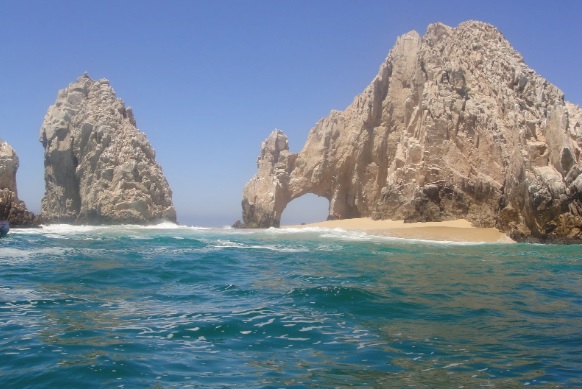
42. Seychelles
The Island nation of Seychelles is among the handful of African countries that offer a digital nomad visa and is known as the Seychelles Workcation Program. 29 It is valid for 12 months and has a low application fee of US $50. Seychelles’ cost of living is on par with France and the application process for this visa is straightforward—the applicant needs to have a valid passport, provide documents proving employment and/ or being a business owner with proof of income and wealth. Fixed internet speeds range in the 24.1 Mbps spectrum.
Seychelles is a beautiful island nation that is off the East African coast and consists of an archipelago of 115 islands. It has numerous white, pristine and sandy beaches that can easily rival those found in the Caribbean, coral reefs and nature reserves. It has rare animals such as the giant Aldabra tortoises, and its larger island, Mahé is home to its capital, Victoria that is the hub and spring point to visiting its adjacent islands. Seychelles is famous for Anse Source d’Argent which is a famous beach with unique granite boulders that are a tourist magnet. This African gem is truly a digital nomad’s paradise.
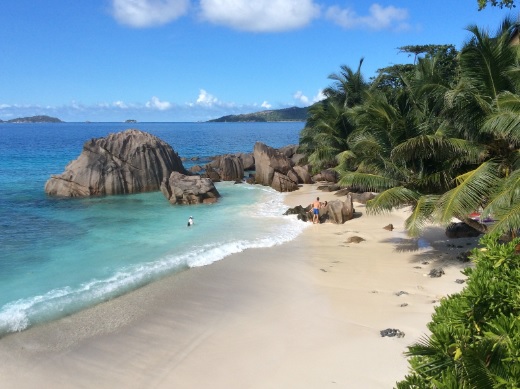
43. Namibia
Namibia is the first African country that launched a digital nomad visa designed for remote workers which is a testament to the progressiveness of this large African nation. 30 The visa has a low income requirement at US $2,000 a month and the holder receives a 6 months residence permit that cannot be renewed. Costs are low for the application at US $62 but internet speeds in the country are dismal, with fixed internet speeds clocking in at 7.59 Mbps and mobile speeds averaging at 16.09 Mbps.
The country is famous for the Namib Desert that straddles its Atlantic Ocean coast and has quite a diverse wildlife population with a large cheetah population. It is a safe country and quite easy to travel through with a good infrastructure (it actually has the best roads in Africa) and Etosha National Park has elephants, giraffes, black rhinos and even lions. This country should offer the digital nomad plenty of safari adventures.

What Are The Requirements for a Digital Nomad Visa? Who Is Eligible for a Digital Nomad Visa?
The most important thing a digital nomad has to prove is that they have:
- Remote work that uses the internet and digital technologies to perform—this may be either be working remotely for a company, freelancing or that they are entrepreneurs.
- Satisfy a minimum income threshold set by the host country that is issuing the visa.
- Have health insurance.
- Have no criminal convictions.
Once an individual is able to truthfully furnish this information, then they are eligible for a digital nomad visa. Always check with the country you are visiting if they may have additional requirements.
Frequently Asked Questions
What are The Costs for a Digital Nomad Visa?
The costs for a digital nomad visa vary with some being on the pricey side costing up to US $2,000 per applicant and can go up to US $3,000 for family applications in some of the Caribbean countries—some countries like Mauritius and Georgia do not charge for digital nomad visas.
On average, the digital nomad should expect to pay under US $500 for a digital nomad visa. However, when a digital nomad is applying to have a spouse and/ or children, the costs usually go higher as would the income requirements.
Can a Digital Nomad Migrate With Family?
Yes, most countries that offer digital nomad visa give the remote worker the option to have either their spouse and/ or children join them. In many cases, they also allow the children to access educational services if the stay ends up being fairly long term. Some countries such as Hungary do not allow digital nomads to move with family.
Can Digital Nomads Eventually Obtain Permanent Residence and/or Citizenship?
Most countries that offer digital nomad visas do not allow nomads to transition into permanent residence. However, some countries like Spain, Portugal and Albania offer lengthy renewable resident visas that can eventually be switched into permanent resident visas after a period of 5 years—permanent residents are typically eligible to apply for citizenship.
Other countries such as Mauritius allow the digital nomad to switch to a work visa while still in the country if they are able to secure new employment in the country. Mauritius also offers 20 year permanent resident visas to those living and working on the island nation.
How Does Someone Apply For a Digital Nomad Visa?
Most countries allow for an application for a digital nomad visa to be lodged at either the embassy or the consulate. Some countries also have web portals where the applicants can make their application and submit their documents. Generally applicants will be required to furnish:
- Passport that has at least 6 months validity
- Visa application form
- Passport photographs
- Proof of remote work
- Proof of health insurance
- Financial income evidence
- Official documents such as birth certificates, credentials and CV etc
References
[1] Government of Iceland, M. o. (2022). REMOTE WORK VISA FAQ. Retrieved 2022, from https://work.iceland.is/working/remote-work-visa-faq/
[2] Government, T. C. (2020, October 21). Cayman Islands Launches Global Citizen Concierge Program. Retrieved 2022, from https://www.visitcaymanislands.com/en-us/ourcayman/news/2020/october/cayman-islands-launches-global-citizen-concierge-p
[3] Bermuda, G. o. (2022). Frequently Asked Questions. Retrieved 2022, from https://forms.gov.bm/work-from-bermuda/faq
[4] Thailand, G. o. (2022). Thailand Long-Term Resident (LTR) Visa. Retrieved 2022, from https://www.thaiembassy.com/thailand-visa/thailand-long-term-resident-ltr-visa
[5] (MDEC), M. D. (2022). What is DE Rantau? Retrieved 2022, from https://mdec.my/derantau
[6] Office, Abu Dhabi Residents (2023). Remote Work Visa. Retrieved 2023, from https://www.adro.gov.ae/Remote-Work-Visa/Remote-Work-Visa
[7] Dubai, G. o. (2022, November 17). UAE Dubai Work remotely. Retrieved 2022, from https://visalist.io/united-arab-emirates/digital-nomad-visa
[8] Office, T. E. (2022). Taiwan Employment Gold Card. Retrieved 2022, from https://goldcard.nat.gov.tw/en/
[9] Republic of Croatia, M. o. (2022). Temporary stay of digital nomads. Retrieved 2022, from https://mup.gov.hr/aliens-281621/stay-and-work/temporary-stay-of-digital-nomads/286833
[10] Republic, M. o. (2022). Entrepreneurship. Retrieved 2022, from https://www.mzv.cz/jnp/en/information_for_aliens/long_stay_visa/entrepreneurship.html
[11] Estonia, R. o. (2022). e-Residency vs digital nomad visa. Retrieved 2023, from https://www.e-resident.gov.ee/nomadvisa/
[12] Immigration, D. o. (2022). Long-term visa for remote work. Retrieved 2023, from https://island.is/en/get-long-term-visa-for-remote-workers
[13] Berlin, S. o. (2022). Residence permit for self-employment – granting. Retrieved 2023, from https://service.berlin.de/dienstleistung/305249/
[14] T. N. (2022). Skilled workers. Retrieved 2023, from https://www.udi.no/en/want-to-apply/work-immigration/skilled-workers/#link-834
[15] Ministerio de Asuntos Exteriores, U. E. (2022). Non-working (Non-lucrative) residence visa. Retrieved 2023, from https://www.exteriores.gob.es/Consulados/losangeles/en/ServiciosConsulares/Paginas/Consular/Visado-de-residencia-no-lucrativa.aspx
[16] Policing, H. N.-G. (2022). White Card. Retrieved 2023, from http://www.bmbah.hu/index.php?option=com_k2&view=item&layout=item&id=1714&Itemid=2100&lang=en
[17] Department, C. R. (2021). DIGITAL NOMADS. Retrieved 2023, from http://www.moi.gov.cy/moi/crmd/crmd.nsf/All/FE2829CCA899862DC22587EA002E321F?OpenDocument
[18] Albania, R. o. (2023). Apply. Retrieved 2023, from https://e-visa.al/apply
[19] Programme, A. a. (2023). Welcome to Antigua and Barbuda’s Nomad Digital Residency programme. Retrieved 2023, from https://nomad.gov.ag/ui/
[20] Trade, M. o. (2022). BARBADOS WELCOME STAMP PROGRAMME. Retrieved 2023, from https://www.foreign.gov.bb/side-post/barbados-welcome-stamp-programme/
[21] Bermuda, G. o. (2023). Bermuda Digital Nomad Visa. Retrieved 2023, from https://visadb.io/visa/long-term-stay/Anywhere/Bermuda/61c206561feb2eb87adf090e
[22] Labour, M. o. (2022). What’s the Best Way to Make the Cayman Islands Your Home? Retrieved 2023, from https://www.caymanenterprisecity.com/global-citizen-program
[23] Montserrat, G. o. (2021). APPLICATIONS ARE NOW OPEN FOR THE 12-MONTH MONTSERRAT REMOTE WORKERS STAMP. Retrieved 2023, from https://www.gov.ms/2021/01/29/applications-are-now-open-for-the-12-month-montserrat-remote-workers-stamp/
[24] Dominica, G. o. (2021). DOMINICA INVITES YOU TO WORK IN NATURE. Retrieved 2023, from https://windominica.gov.dm/
[25] Curaçao, G. o. (2021). WHAT IS THE @HOME IN CURAÇAO PROGRAM? Retrieved 2023, from https://athomeincuracao.com/faq/
[26] Exteriores, M. d. (2022, July 19). Digital Nomad Visa (VITEM XIV). Retrieved 2023, from https://www.gov.br/mre/pt-br/embaixada-helsinque/consular-services/visas/digital-nomad-visa-vitem-xiv
[27] National Directorate of Migration, M. o. (2023, June 6). Provisional Identity Sheet. Retrieved 2023, from https://www.gov.br/mre/pt-br/embaixada-helsinque/consular-services/visas/digital-nomad-visa-vitem-xiv
[28] Mauritius, E. D. (2022). PREMIUM VISA. Retrieved 2023, from https://residency.mu/live/mauritius-premium-visa/
[29] Seychelles, G. o. (2022). Seychelles Electronic Border System. Retrieved 2023, from https://seychelles.govtas.com/workcation
[30] Namibia, G. o. (2023). Namibia Investment Promotion and Development Board. Retrieved 2023, from https://nipdb.com/nomadvisa/
